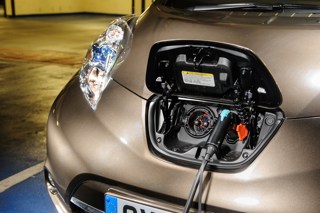The climate ratings of plug-in hybrid vehicles (PHEVs) are set to become a lot more realistic, according to Transport and Environment (T&E).
From 2025, the EU will significantly reduce the so-called utility factors, which is the share of electric driving that regulators use for calculating CO2 emissions of PHEVs.
From 2027, the utility factors of plug-in hybrids will be fully aligned with how they are driven in the real world.
T&E, which has campaigned for years to highlight the true environmental impact of PHEVs, has welcomed the move.
Anna Krajinska, emissions engineer at T&E, said: “For years, the emissions of plug-in hybrids were based on unrealistic driving conditions. “The new rules reflect the reality that PHEVs pollute far more than carmakers claim.
“Governments which still incentivise the purchase of these fake electric vehicles need to stop those harmful subsidies now.”
The latest data shows that, on average, privately owned PHEVs emit three times more CO2 – and therefore use three times more fuel – than recorded officially, claims T&E.
For company cars it is even worse, with plug-in hybrids emitting five times more than their official ratings.
Carmakers have blamed drivers for high emissions, but in reality PHEVs are poorly made with small batteries, weak electric motors, big engines, and usually no ability to fast charge, says T&E.
The current CO2 ratings allow most PHEVs to count as low emission vehicles under the EU’s clean car rules.
The law gives carmakers a bonus for each zero or low emissions vehicle they sell, prompting manufacturers to make more plug-in hybrids as a way of weakening their fleet average emissions target, according to T&E.
Krajinska continued: “We welcome the end of the myth that plug-in hybrids are low emissions vehicles.
“Carmakers will no longer be able to sell high volumes of PHEVs for the sole purpose of weakening their climate targets.
“If they want to avoid EU fines they will have to sell genuinely green cars that help reduce our oil consumption.”
The EU also decided to review its new utility factors in 2024 based on data collected from on-board fuel consumption metres, which will give a more comprehensive assessment of the share of kilometres driven electrically.
This will provide an opportunity to further amend the 2025 and 2027 utility factors agreed today, says T&E.
In the UK, plug-in sales account for a fifth of the new car market in June, according to the Society of Motor Manufacturers and Traders (SMMT).
Battery electric vehicles (BEVs) continued to grow, with a 14.6% increase in volume, as market share continued to grow, reaching 16.1%, up from 10.7% a year before. However, PHEV uptake fell by 4,425 units to take a 5.5% market share.
In total, plug-in vehicles comprised more than a fifth (21.6%) of new cars joining the road in the month.
All other powertrains saw declines in registration volumes and market share apart from hybrid electric vehicles (HEVs), which, despite a 1,172-unit fall, increased their market share to 10.6%.
> Interested in comparing electric vehicle data? Check out our EV tool.
> Interested in ensuring the efficient use of EVs. Check out our dedicated editorial sections: Insight & policy | EV news | Charging & infrastructure | Costs & incentives | Benefit-in-kind | EV case studies | EV road tests























adam.rollins@midas-fms.com - 19/07/2022 15:35
We will look forward to seeing the result of the changes to how CO2 ratings are calculated once these come into force. If PHEVs have no fast charge ability and limited EV range compared to full BEVs, then how likely is it that they will get recharged during an operational day, taking into consideration the limited additional EV mileage to be gained form a lengthy charge session, versus the convenience of using the diesel/petrol capability? At Midas FMS we can see a wide variety of results from similar vehicles, which must be a result of driver behaviour patterns; these may well be driven by work related requirements. If that is the case, then where does the responsibility lie in matching the correct vehicle to the driver/roll? Re-evaluation of emissions ratings will shift the emphasis in vehicle choice. However, have we not seen this kind of pattern happen before in the shift to "low" CO2 diesels, then out of these to mild hybrid petrol and to PHEV? In which case are we just following the lowest BIK options to wherever they lead us? We hope that the eventual result is that the dual motivation of genuine environmental benefit and best tax rates will converge. So we will achieve the goal that the best option for everyone will then be the vehicles with the lowest environmental detriment.